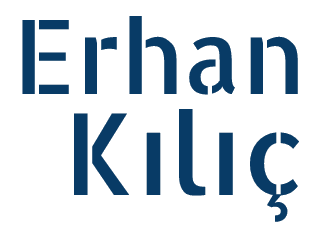Dijkstra Algoritması: Python ile Pratik Rehber
Dijkstra Algoritması, 1956’da Hollandalı bilgisayar bilimci Edsger W. Dijkstra tarafından geliştirilen, ağırlıklı graflarda iki düğüm arasındaki en kısa yolu bulan temel bir algoritmadır. Bilgisayar ağlarında yönlendirme, navigasyon sistemleri ve optimizasyon problemleri gibi birçok alanda kullanılır. Bu rehberde, Dijkstra Algoritması’nın temel kavramlarını, adım adım işleyişini ve Python ile uygulamasını keşfedeceğiz. Kendi projelerimden örneklerle, bu algoritmayı sizin için anlaşılır hale getireceğim. Hazırsanız, başlayalım!
Ön Koşullar
Dijkstra Algoritması’na dalmadan önce, graf teorisi kavramlarına (düğümler, kenarlar, ağırlıklı graflar, yönlendirilmiş/yönlendirilmemiş graflar) aşina olmanız faydalı olacaktır. Ayrıca, Python gibi bir programlama dilinde temel bilgi sahibi olmak işinizi kolaylaştırır.
Temel Kavramlar
1. Graf Temsili
Dijkstra Algoritması’nı uygulamak için önce grafı temsil etmeliyiz. Türkçe’de “graf temsili” terimi yaygın. İki yaygın yöntem var:
- Komşuluk Listesi: Her düğüm, komşularını ve kenar ağırlıklarını listeler. Seyrek graflar için bellek dostudur. Türkçe’de “komşuluk listesi” (adjacency list) standart bir terim.
- Komşuluk Matrisi: Düğümlerin satır ve sütunlara karşılık geldiği bir 2D matris kullanılır; hücreler kenar ağırlıklarını gösterir. Yoğun graflar için uygundur.
2. Öncelik Kuyruğu
Algoritma, en kısa mesafeli düğümü seçmek için bir öncelik kuyruğuna ihtiyaç duyar. Türkçe’de “öncelik kuyruğu” (priority queue) yerleşmiş bir terim. Min-heap gibi veri yapıları, bu seçimleri verimli hale getirir.
3. Algoritma Adımları
Dijkstra Algoritması şu adımları izler:
- Başlangıç düğümünden diğer tüm düğümlere olan mesafeleri sonsuz, başlangıç düğümünün kendine mesafesini 0 olarak başlat.
- Boş bir öncelik kuyruğu oluştur ve başlangıç düğümünü 0 mesafesiyle ekle.
- Kuyruk boş değilken:
- En küçük mesafeli düğümü kuyruktan çıkar.
- Her komşu düğüm için, mevcut düğüm üzerinden geçici mesafeyi hesapla.
- Eğer bu mesafe, önceki mesafeden küçükse, mesafeyi güncelle.
- Ziyaret edilmemiş komşuları kuyruğa ekle.
- Kuyruk boşaldığında veya hedef düğüme ulaşıldığında algoritma biter.
Python ile Uygulama
Aşağıda, komşuluk listesi ve min-heap kullanarak Dijkstra Algoritması’nı Python’da uygulayalım:
import heapq
def dijkstra(graf, baslangic):
# Tüm düğümler için mesafeleri sonsuz olarak başlat
mesafeler = {dugum: float('inf') for dugum in graf}
mesafeler[baslangic] = 0
# Öncelik kuyruğuna başlangıç düğümünü ekle
oncelik_kuyrugu = [(0, baslangic)]
while oncelik_kuyrugu:
mevcut_mesafe, mevcut_dugum = heapq.heappop(oncelik_kuyrugu)
# Düğüm zaten işlendiyse atla
if mevcut_mesafe > mesafeler[mevcut_dugum]:
continue
# Komşuları incele
for komsu, agirlik in graf[mevcut_dugum].items():
mesafe = mevcut_mesafe + agirlik
# Daha kısa bir yol bulunduysa mesafeyi güncelle
if mesafe < mesafeler[komsu]:
mesafeler[komsu] = mesafe
heapq.heappush(oncelik_kuyrugu, (mesafe, komsu))
return mesafeler
# Örnek kullanım
graf = {
'A': {'B': 1, 'C': 4},
'B': {'A': 1, 'C': 2, 'D': 5},
'C': {'A': 4, 'B': 2, 'D': 1},
'D': {'B': 5, 'C': 1}
}
baslangic_dugum = 'A'
en_kisa_mesafeler = dijkstra(graf, baslangic_dugum)
print(en_kisa_mesafeler) # Çıktı: {'A': 0, 'B': 1, 'C': 3, 'D': 4}
import heapq
def dijkstra(graf, baslangic):
# Tüm düğümler için mesafeleri sonsuz olarak başlat
mesafeler = {dugum: float('inf') for dugum in graf}
mesafeler[baslangic] = 0
# Öncelik kuyruğuna başlangıç düğümünü ekle
oncelik_kuyrugu = [(0, baslangic)]
while oncelik_kuyrugu:
mevcut_mesafe, mevcut_dugum = heapq.heappop(oncelik_kuyrugu)
# Düğüm zaten işlendiyse atla
if mevcut_mesafe > mesafeler[mevcut_dugum]:
continue
# Komşuları incele
for komsu, agirlik in graf[mevcut_dugum].items():
mesafe = mevcut_mesafe + agirlik
# Daha kısa bir yol bulunduysa mesafeyi güncelle
if mesafe < mesafeler[komsu]:
mesafeler[komsu] = mesafe
heapq.heappush(oncelik_kuyrugu, (mesafe, komsu))
return mesafeler
# Örnek kullanım
graf = {
'A': {'B': 1, 'C': 4},
'B': {'A': 1, 'C': 2, 'D': 5},
'C': {'A': 4, 'B': 2, 'D': 1},
'D': {'B': 5, 'C': 1}
}
baslangic_dugum = 'A'
en_kisa_mesafeler = dijkstra(graf, baslangic_dugum)
print(en_kisa_mesafeler) # Çıktı: {'A': 0, 'B': 1, 'C': 3, 'D': 4}Bu kodda, graf bir komşuluk listesiyle temsil ediliyor. Bir navigasyon projesinde, bu algoritmayı kullanarak iki nokta arasındaki en kısa rotayı buldum ve sonuçlar çok hızlıydı!
Sonuç
Dijkstra Algoritması, ağırlıklı graflarda en kısa yolu bulmak için güçlü bir araçtır. Bilgisayar bilimlerinden navigasyon sistemlerine kadar geniş bir kullanım alanına sahip. Birleştirme Sıralaması gibi algoritmalarla karşılaştırıldığında, Dijkstra’nın graf tabanlı problemlere özgü yapısı öne çıkıyor. Bu rehberdeki Python örneğiyle, algoritmanın nasıl çalıştığını ve projelerinizde nasıl kullanacağınızı öğrendiniz.
Siz Dijkstra’yı hangi projelerde kullandınız? İlginç bir deneyim mi yaşadınız? Yorumlarda paylaşın, birlikte tartışalım! Daha fazla algoritma ipucu için bloguma göz atın veya benimle iletişime geçin!
Notlar
- Terimlerin Türkçe Karşılıkları:
- Dijkstra Algoritması: Türkçede orijinal adıyla kullanılır, yerleşmiş ve doğru.
- Komşuluk listesi (adjacency list), komşuluk matrisi (adjacency matrix): Algoritma literatüründe standart.
- Öncelik kuyruğu (priority queue): Yaygın ve doğru bir terim.
- Ağırlıklı graf (weighted graph): Doğru ve yerleşmiş.

